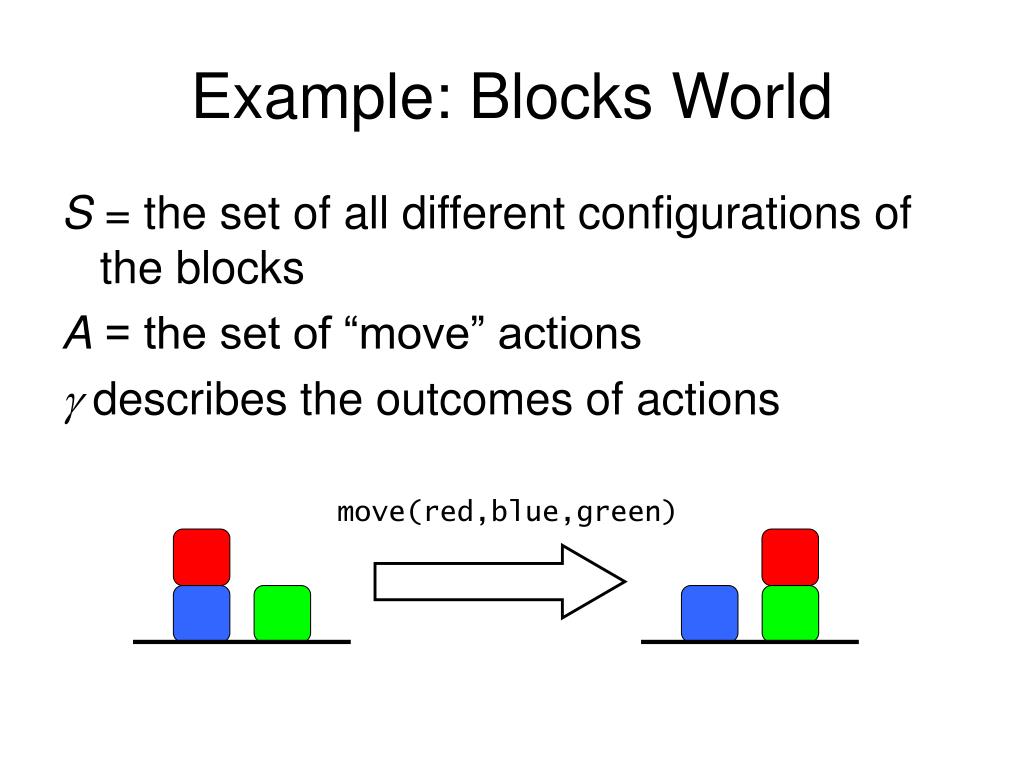

They should be able to show that they’re providing support to the ones doing the teaching, too. It’s not enough for a STEAM program to list their goals for STEAM teaching. A project like this takes a lot of thought and knowledge. Kids should be really engaged in an activity that uses their higher level thinking, incorporates the arts into technical content, and builds skills like problem-solving, creativity, and collaboration. This is because STEAM learning isn’t about just using computers to complete a math worksheet. Quality support for teachersĪ great STEAM program requires a lot of focus, dedication, and time from teachers. Here are the characteristics you should look for: 1. If you’re as excited about STEAM teaching and learning as we are, then you’re probably ready to search for a great program for your kids.
#Block world problem example how to#
How Kids Can Start STEAM Education How to Choose a Great STEAM Program They can incorporate the type of art they enjoy into STEAM learning that may feel more unfamiliar, and they gain new skills more easily. Plus, the combination of artistic mediums with projects that can feel technical and complicated helps them feel more engaged and comfortable. Lots of different art disciplines can be incorporated into STEAM education, so kids become exposed to all the variations of art and design. They often have to experiment with a variety of problem-solving methods, too.
#Block world problem example trial#
This means that kids get to problem-solve in unique and realistic ways, where they’re often exposed to trial and error, taking risks, and innovative thinking. STEAM projects rarely have a one-size-fits-all answer or an easy step-by-step process to follow. Encourages problem-solving in unique ways They also see how STEAM relates to other subjects like history or biology, which requires that they make connections and use different parts of their brains. This engages them in higher level critical thinking. When kids are engaged in STEAM activities, they learn about technology and engineering while applying the knowledge to real-world situations. They also learn to listen to others and reach common ground through communication. Kids can learn from each other and put their knowledge together to solve problems more successfully. One of the benefits of STEAM education is that it encourages teamwork and collaboration. Not every kid is the same they have different strengths and interests. Keep reading here for lots of great information about choosing STEAM programs and starting STEAM learning at home. If you want more information about the history of STEAM and why it’s important, read this Makeblock blog. Skills like problem-solving, innovation, and collaboration prepare them to be successful.


It’s about the real-world skills kids learn when they’re engaged in hands-on activities that are relevant to their lives. It stands for Science, Technology, Engineering, Art, and Math, but it’s not just about teaching content in these five fields. We’ve talked about STEAM education a lot at Makeblock, and that’s because we know how important STEAM for kids is.


 0 kommentar(er)
0 kommentar(er)
